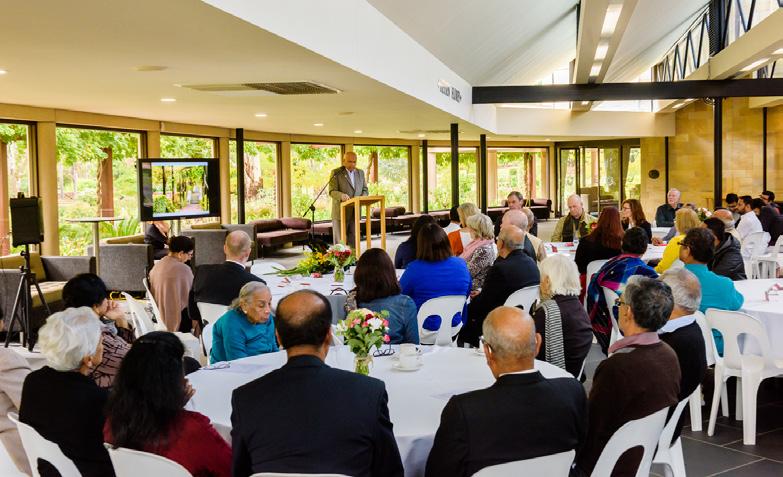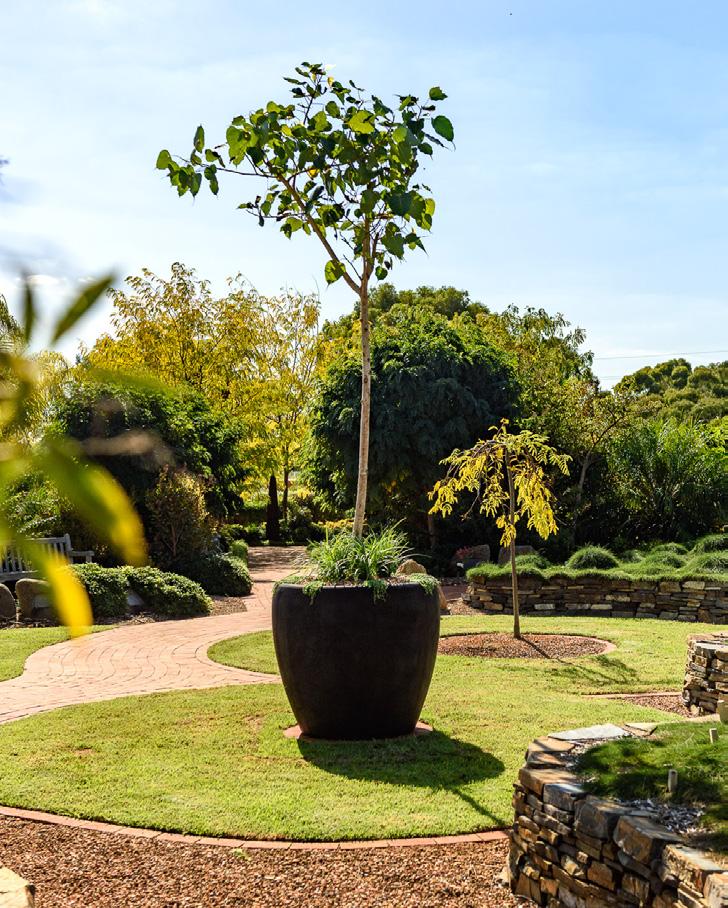
3 minute read
Life’s last journey
from 2017-06 Adelaide
by Indian Link
Saying good-bye to loved ones with grace
BY LP AYER
Afew weeks ago, I received an invitation from an unexpected quarter which left me both amazed and amused. Why me, I wondered. This is a place to which we avoid going, or prefer delaying as much as possible, but eventually cannot escape at some time. The invitation was from the CEO of a park authority.
Why so much reluctance in going to a park, you ask. This particular 40-hectare park is very picturesque, with rows of rose plants and manicured lush green lawns. At the far western side stand a number of gum trees and other natives, resembling a national park. There is a single ‘Bodhi’ tree standing too. An oddity in this park has to be the large building right in the centre of a huge green grove. It is so serene and peaceful that you would think people are dying to get in there. In fact, one has to, since this is our city’s largest cemetery, Centennial Park. Now you can understand my bewilderment over the invitation!
On reading the invite further, I understood the Park’s management wanted to announce some modifications it had planned, to make the final journey for members of the Indian community a bit more in tune with their traditional rites. Around eighty people were present, representing various groups from the Hindu, Sikh and Buddhist communities, as their religious practices have a common thread.
Until now, my only experience of a funeral - up close and personal - was when my father passed away a year before I migrated to Australia. His final journey was like any other that one will come across back home. Being the male heir, I carried out my duty it was my duty to light the pyre with teary eyes. Although my head said it was my duty to perform this as dictated by tradition, my heart still felt the pangs.
My first visit to a cemetery in Australia happened a couple of years after I arrived here when a fellow Rotary Club member passed away. The cremation ceremony was solemn and dignified. After eulogies from family members and friends - not usual back home - and floral tributes from the attendees, the coffin slowly sank from the raised platform as the lights dimmed and the curtains gently came down, signalling the end of one’s life journey. Sad indeed, but I thought that was the most dignified way one could get a farewell.
In contrast was my other experience at a crematorium when I had to bid farewell to my mother in Chennai, 17 years ago. After the religious rites, her body was placed on a flat-bed metal trolley and swiftly shoved inside a burning furnace that I could clearly see until the door was shut. It haunted me for days on end. Having worked in a steel factory, I am used to seeing materials shovelled into the furnace. But to see one’s mother who had brought you into this world, disposed of like that, is crude. There should be a better way to bid adieu to our loved ones.
The Park authorities had called this meeting ‘Hindu Cultural Appreciation Day’, and were planning to incorporate better ways for cremation. Although the final farewell process in Australia is very decorous, the Indian community had earlier suggested that some features be added to give it an ‘Indian feel’.

The Park’s CEO announced that besides placing an ‘Om’ symbol at Hindu cremations, they had implemented other suggestions like placing the body in a north-south direction, as per the tradition; allowing the eldest son or a close male relative to press a button to start the cremation process; keeping the coffin open for final viewing of the body; allowing lamps and incense near the coffin, and facilitating families and friends to chant prayers at some point in the park.
The community has also asked for a small room for the family and friends to grieve after the cremation, similar to the Reflection Room set up by the Enfield Cemetery in the northern suburbs. The ‘Bodhi’ tree, transported from Darwin, is meant for similar purposes for the Buddhist community.
Earlier, the meeting had started appropriately with the chanting of a verse from the Hindu Ishavasya and Mandukya Upanishads and Yajurveda. It concluded with the Sikh Aardass.










